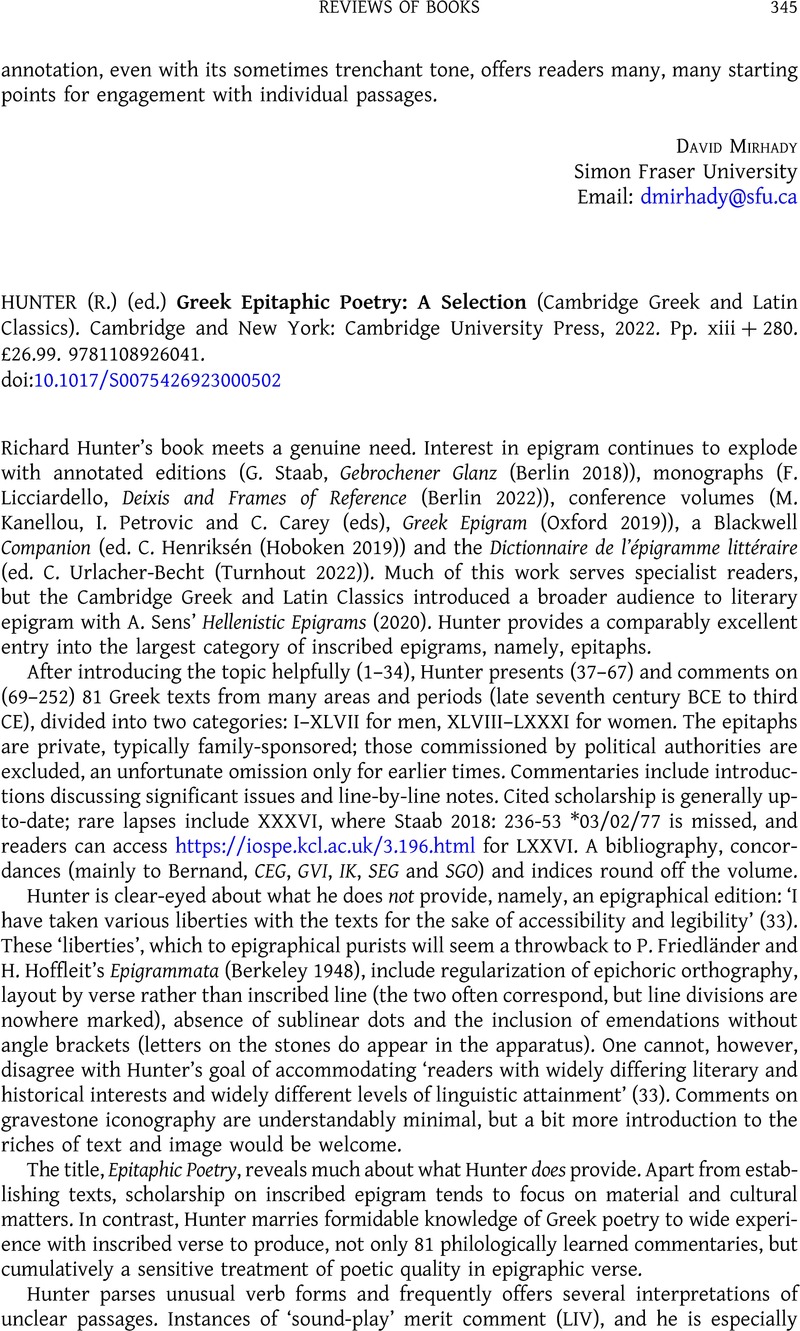No CrossRef data available.
Article contents
(R.) HUNTER (ed.) Greek Epitaphic Poetry: A Selection (Cambridge Greek and Latin Classics). Cambridge and New York: Cambridge University Press, 2022. Pp. xiii + 280. £26.99. 9781108926041.
Review products
(R.) HUNTER (ed.) Greek Epitaphic Poetry: A Selection (Cambridge Greek and Latin Classics). Cambridge and New York: Cambridge University Press, 2022. Pp. xiii + 280. £26.99. 9781108926041.
Part of:
Literature
Published online by Cambridge University Press: 15 August 2023
Abstract
An abstract is not available for this content so a preview has been provided. Please use the Get access link above for information on how to access this content.

- Type
- Reviews of Books
- Information
- Copyright
- © The Author(s), 2023. Published by Cambridge University Press on behalf of the Society for the Promotion of Hellenic Studies


